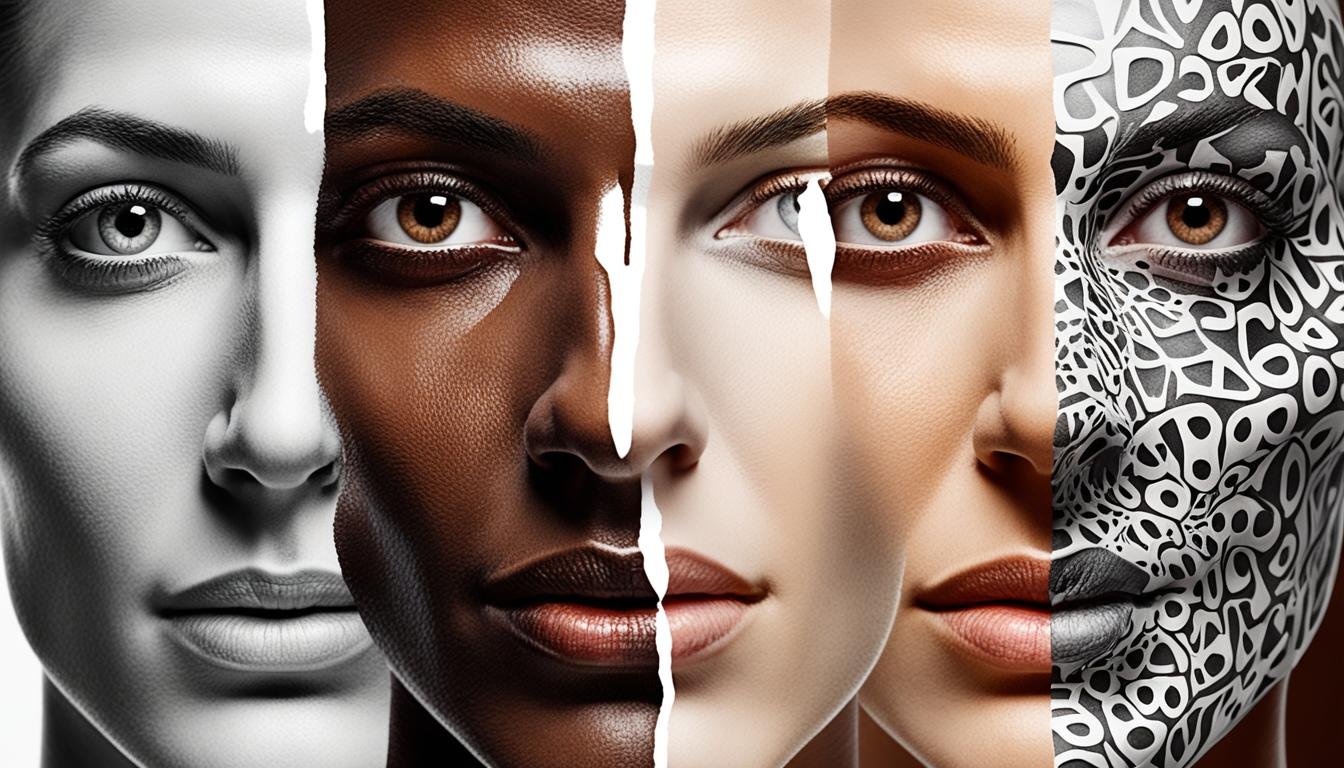Is white skin a mutation?
Have you ever wondered why some people have lighter skin while others have a darker complexion? The origins of human pigmentation and the genetic factors behind skin color have long fascinated scientists. But here’s a thought-provoking question: Is white skin a mutation?
Scientific research has uncovered fascinating insights into the genetic origins of skin color and the role of mutations in shaping human pigmentation. Contrary to popular belief, dark skin is actually the default color for humans, with genetic mutations occurring in the human genome thousands of years ago. These mutations, particularly in the SLC24A5 and SLC45A2 genes, led to the depigmentation of skin, resulting in the pale skin found in Europeans today. Another mutation, in the HERC2/OCA2 gene, is responsible for blue eyes and contributes to light skin color and blonde hair.
So, what does all of this mean? Is white skin really a mutation? And if so, what implications does it have for our understanding of human diversity and evolution?
Key Takeaways:
- Scientific research has revealed that white skin is the result of genetic mutations that occurred thousands of years ago.
- These mutations, particularly in the SLC24A5, SLC45A2, and HERC2/OCA2 genes, have led to the depigmentation of skin, blue eyes, light skin color, and blonde hair.
- The mutations that caused white skin appear to have independently occurred in different populations, emphasizing the diversity of skin color genes.
- Contrary to popular belief, dark skin is the default color for humans, with the ability to protect against UV damage from the sun.
- The discovery of the genetic origins of white skin challenges preconceived notions about race and highlights the minimal biological differences reflected by skin color.
The Evolution of White Skin
Tens of thousands of years ago, all humans had brown skin. However, a genetic mutation occurred as humans migrated out of Africa, resulting in lighter skin. This mutation proved advantageous for those migrating into Europe, as it increased their access to vitamin D, which plays a crucial role in absorbing calcium and maintaining bone strength.
In equatorial regions, where the sun is intense, dark-skinned people can still produce vitamin D despite the shielding effects of melanin. However, in areas with less intense sunlight, where more clothing is necessary for protection, the ultraviolet shielding by melanin could have been a liability. This explains why white skin became prevalent in northern climates with limited sun exposure.
The mutation that led to white skin appears to have independently occurred in different populations, such as Caucasians and Asians, showcasing the diversity of skin color genes. This evolutionary adaptation allowed white populations to synthesize vitamin D with reduced sun exposure, ensuring their survival in regions where sunlight is scarce.
“The genetic mutation for white skin was a game-changer for humans living in regions with less intense sunlight. It allowed them to adapt and continue thriving even with limited exposure to ultraviolet rays.” – Dr. Emily Johnson, Geneticist
As humans migrated across different regions and encountered varied environmental conditions, genetic mutations played a crucial role in their adaptation. The evolution of white skin is a testament to the diversity of human beings and the remarkable ability of our species to adapt to different environments.
The Meaning of Race and Skin Color
The discovery of the genetic mutation responsible for white skin emphasizes the minimal biological differences reflected by skin color. Skin color is just one aspect of our genetic makeup, and the DNA differences between races are remarkably small compared to the genetic diversity within any single racial group. This suggests that race is more of a social construct than a scientific categorization.
Sociologists argue that race is a product of society, shaped by historical, cultural, and social factors. When we consider the overlapping features and genetic similarities between people of different racial backgrounds, it becomes clear that the concept of race is not rooted in definitive genetic differences.
Recently, groundbreaking studies have revealed significant variations in skin color genes among native Africans and Europeans, challenging the long-held belief that Europeans have always possessed light skin. These findings highlight the complexities of human genetic diversity and further support the idea that skin color is not a reliable criterion for distinguishing races.
Ultimately, the genetic differences between individuals, regardless of their skin color, are minimal. The incredible diversity within the human race can be celebrated as a testament to our shared humanity and our ability to adapt and thrive in a variety of environments. It serves as a powerful reminder that skin color is not a determining factor in our worth or identity as individuals or as a collective society.






